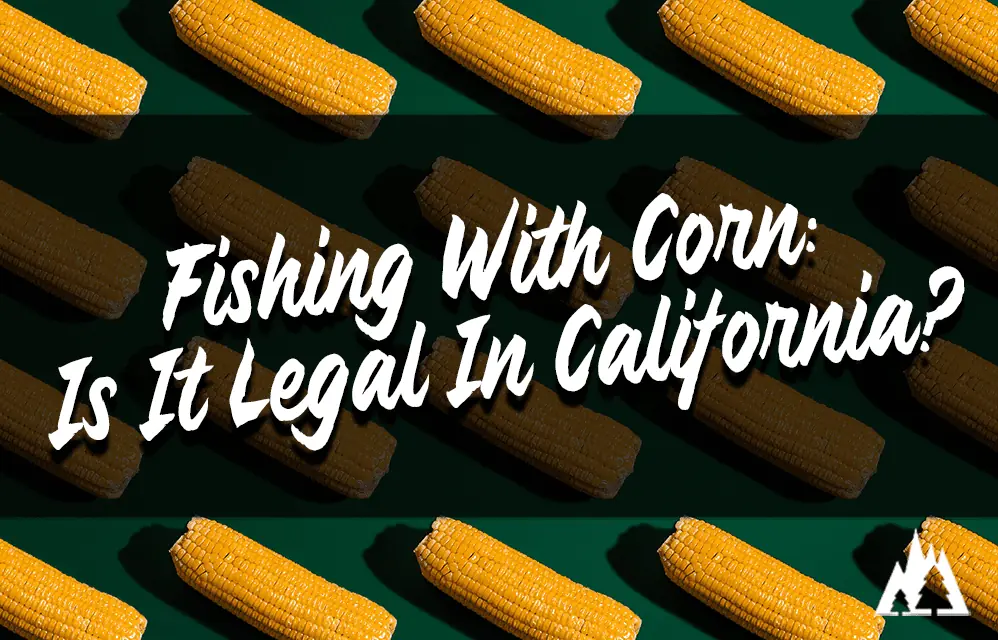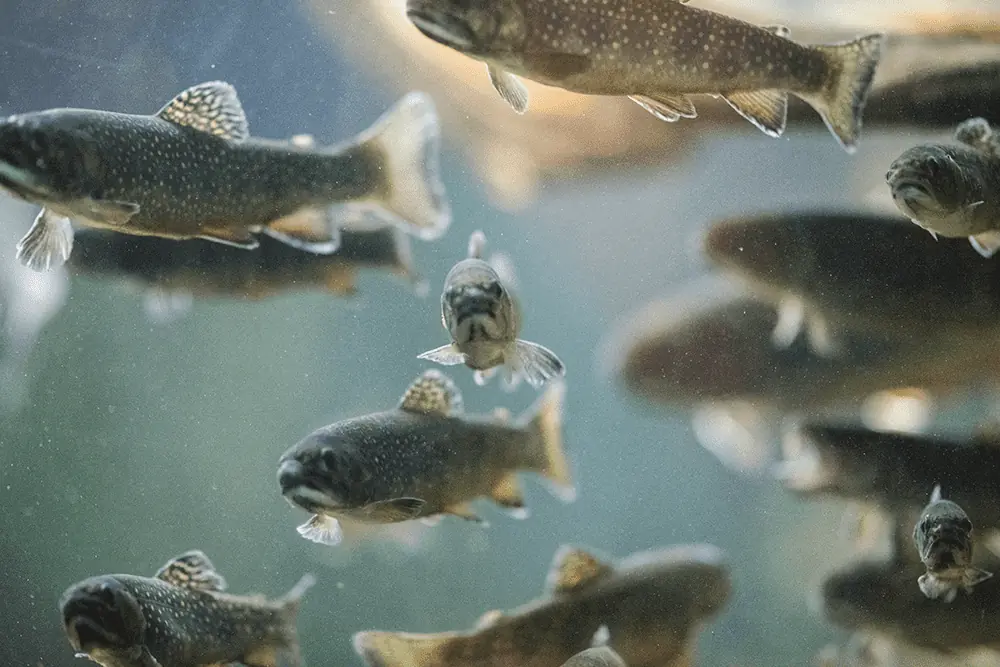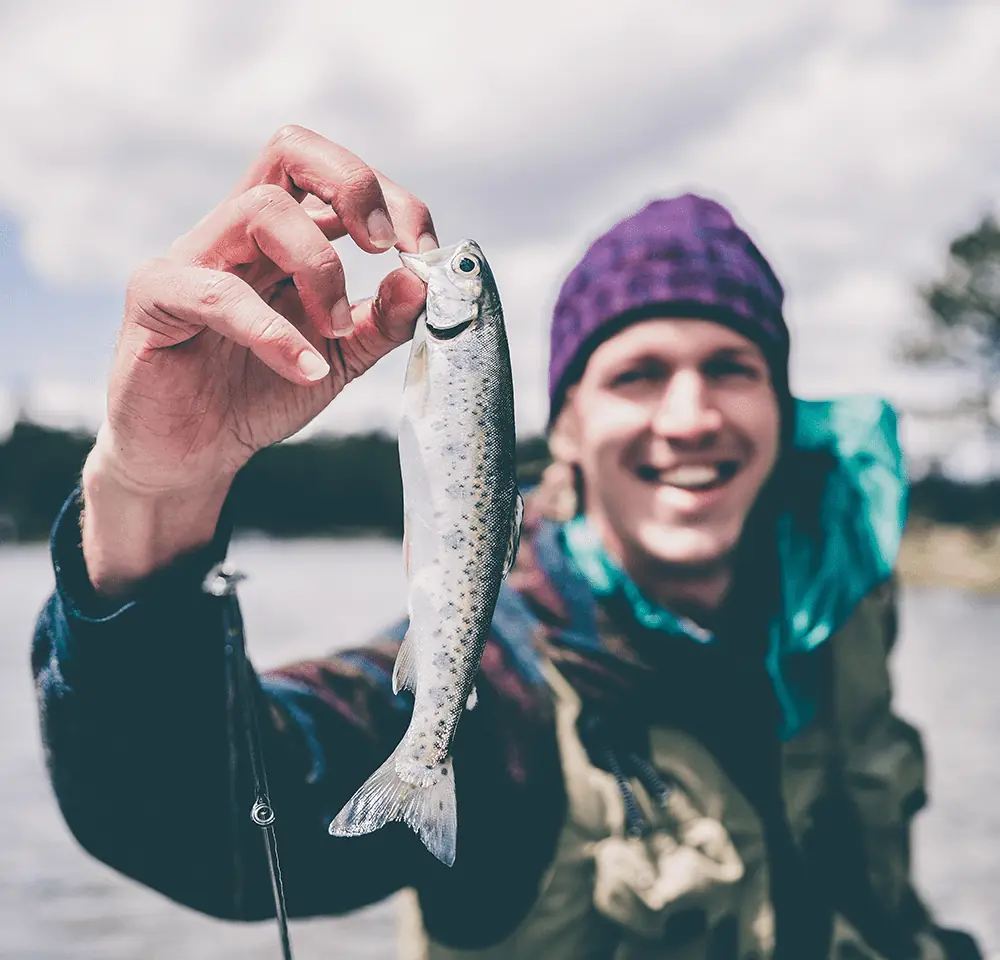Is Fishing with Corn Illegal in California For Trout?

Fishing with corn as bait is not illegal in California, however, using corn as chum is illegal except when fishing at the Salton Sea.
Let’s take a few steps back.
Why would anyone think corn is illegal in the first place?
When I was a kid, I was told that using sweet corn kernels was bad for fish because they can’t digest it, it will fill them up, and they die.
It made sense, so I just rolled with it without further research.
But that’s not the case.
Commission fisheries biologist Tom Bender conducted a 54-day experiment in 1992 examining corn’s impact on trout.
He took 20 rainbow trout that averaged 8″ long and weighed .23 pounds.
He placed these trout in two separate tanks, one group was fed with only whole corn kernel, and the other group was fed standard trout pellets.
The trout didn’t digest the corn well, and fecal material on the tank floor showed poorly digested matter.
However, over the 54-day experiment, no mortalities occurred in either the test or control group. At the end of the project, control fish (fed pellets) averaged 10 inches and .46 pounds. The school-fed corn averaged 9.2 inches and weighed .34 pounds on average.
Bender concluded that although the “corn fish” grew only about half that of the control trout, there were no obvious ill effects.
“The test fish did not fill up with corn and burst,” said Bender.
Furthermore, they were able to pass the corn, and it didn’t block their intestinal tracts.”

What is the Difference Between Chumming and Baiting With Corn?
Chumming and baiting with corn are two different practices used to lure fish. Chumming is the process of throwing ground bait into the water, usually made of fish, meat, bones, and blood.
This practice can attract fish in your area and is illegal in some states due to the belief that it will cause fish like sharks to associate humans with food.
On the other hand, baiting with corn involves attaching a piece of corn to a hook or line and using it as a lure for fish.
When chumming with corn, anglers throw a handful of kernels into the water, typically trying to attract fish like trout.
The problem with this method is that wild animals may start associating humans with food if they become dependent on them for sustenance which could lead to dangerous situations involving attacks from larger predators such as sharks.
I know the question was in regard to trout, but that’s the concern.
Baiting with corn, however, does not pose this risk since no ground bait needs to be thrown into the water; instead, only one piece of attached corn needs to be used on a hook or line, which still allows for fishing without posing any danger from large predators looking for an easy meal near people.
Feeding actual pieces of whole-kernel sweet corn directly into bodies of water has been found by researchers at Purdue University’s Department Of Fisheries And Wildlife Sciences not only safe but also beneficial when done responsibly since it provides an additional source of nutrition during times when natural sources are scarce while also increasing growth rates among juvenile fishes due its high protein content compared to regular feed pellets typically used by aquaculture operations worldwide.

Will Corn Harm the Fish?
No, corn does not harm the fish. Some say that it can harm the digestive tract of a fish, but there is no evidence for this. Fish love corn and will often take the bait with it.
The problem lies in catch-and-release fishing when using corn as bait, if a fish takes the bait, it may swallow the hook, which can be difficult to remove without causing injury or death to the fish.
Chumming with large amounts of corn is discouraged because it is bad for the environment – taking up to a month to degrade on its own in water and being unsightly.
It’s also illegal in some areas, so anglers should check local regulations before chumming with any type of food source like corn.
Angling without chumming is much more fulfilling than chumming with large amounts of food, except for professional fishermen who sell their catch at the market.
However, they should still adhere to local laws regarding what types of bait are allowed in certain areas.
When deciding whether or not you should use corn as your go-to bait while fishing, consider both environmental impact and potential damage caused by hooks swallowed by unsuspecting prey, ultimately leaving you feeling satisfied knowing that your actions were responsible ones.
Before You Go
Before you leave, check out these resources to help you become a better angler and increase your chances of catching fish:






